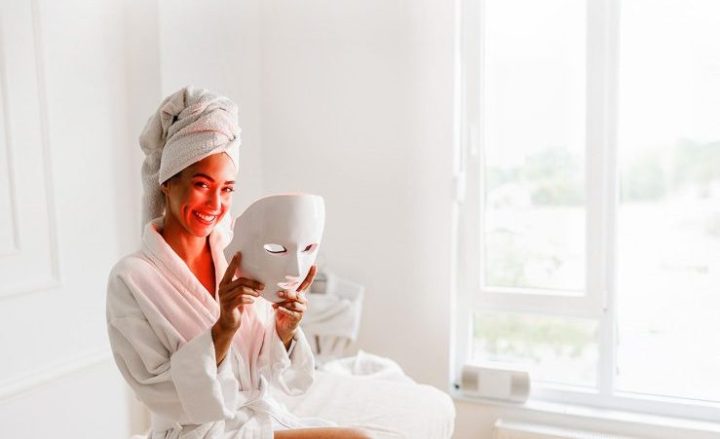
Is this a skincare skin cure?
Are you targeting multiple skin conditions – collagen production and elasticity, wrinkles, blemishes, fine lines, sun damage, pigmentation – with a long list of products? LED therapy and the subsequent viral LED masks are a trending alternative. The question is, can this technology tackle it all in one treatment?
Light emitting diode (LED) therapy is a relatively new treatment adopted in clinics and within home skincare regimens, yet researchers from Harvard Medical School say evidence of safety is not quite there yet. With growing popularity, suspicions arise – is LED therapy all it’s cracked up to be? Does a dermatologist-approved treatment beat the ease of an at-home mask you can wear while watching television?
What is it?
LED therapy is the process where various wavelengths of light are emitted to treat a range of skin concerns through in-clinic technology, a mask, or a spot-treatment wand. Red light therapy boosts collagen and elastin production, enhancing the skin’s natural defense mechanism to repair and promote skin that is plumper and more even. To target acne-causing bacteria, pigmentation, and sun damage, experts recommend blue light therapy.
Without the invasiveness of some beauty treatments, experts say LED therapy is a popular option – given your device, or clinic of choice, adheres to correct standards.
Is it safe?
Of course, there is a catch. Most beauty treatments and technologies present risks and should be practised with caution and professionalism – LED therapy comes with its own caveat. Protecting your eyes is essential to avoid damage. Without protection, expect your vision to be impaired. Itching, swelling, tingling, and increased sensitivity to the sun’s rays are all potential side effects.
MoleMap, pioneers in melanoma detection, advise consumers to understand the risks and benefits before engaging in LED therapy, as research into the effects of red light therapy is still in its early days.
Where do I start?
Consulting a clinician should always be your first point of call. Both in-clinic and at-home treatments are on the market, the former being the recommended option. A trained professional can determine if LED therapy is right for you, expertly tailoring the treatment for appropriate, safe application. Leading dermatologists advise LED therapy should not be treated as an alternative to your regular regimen, rather a supplementary addition to supercharge your skincare.
Experts recommend applying serums or photosensitisers prior – another drawcard to a dermatologist’s clinic over the at-home alternative.



